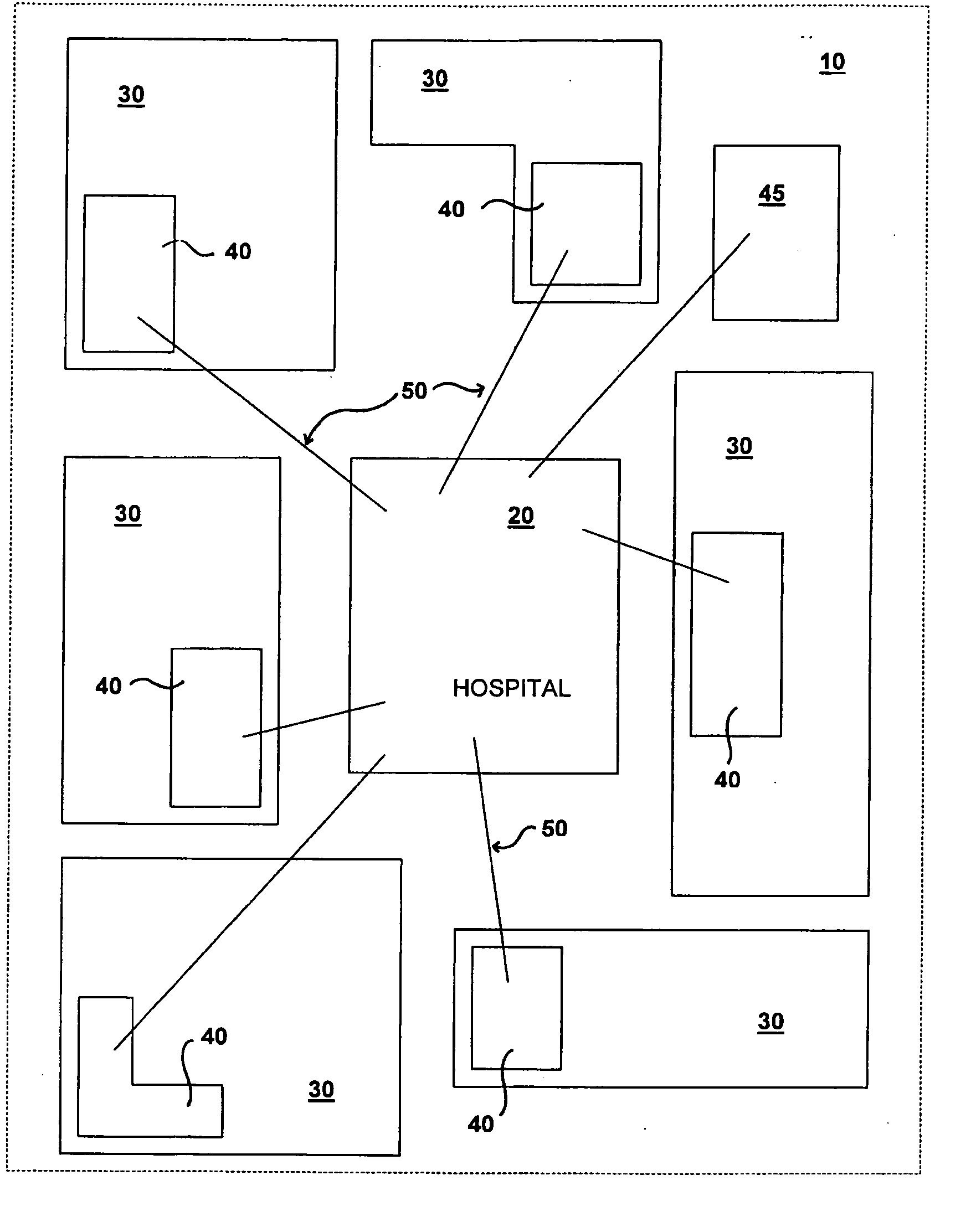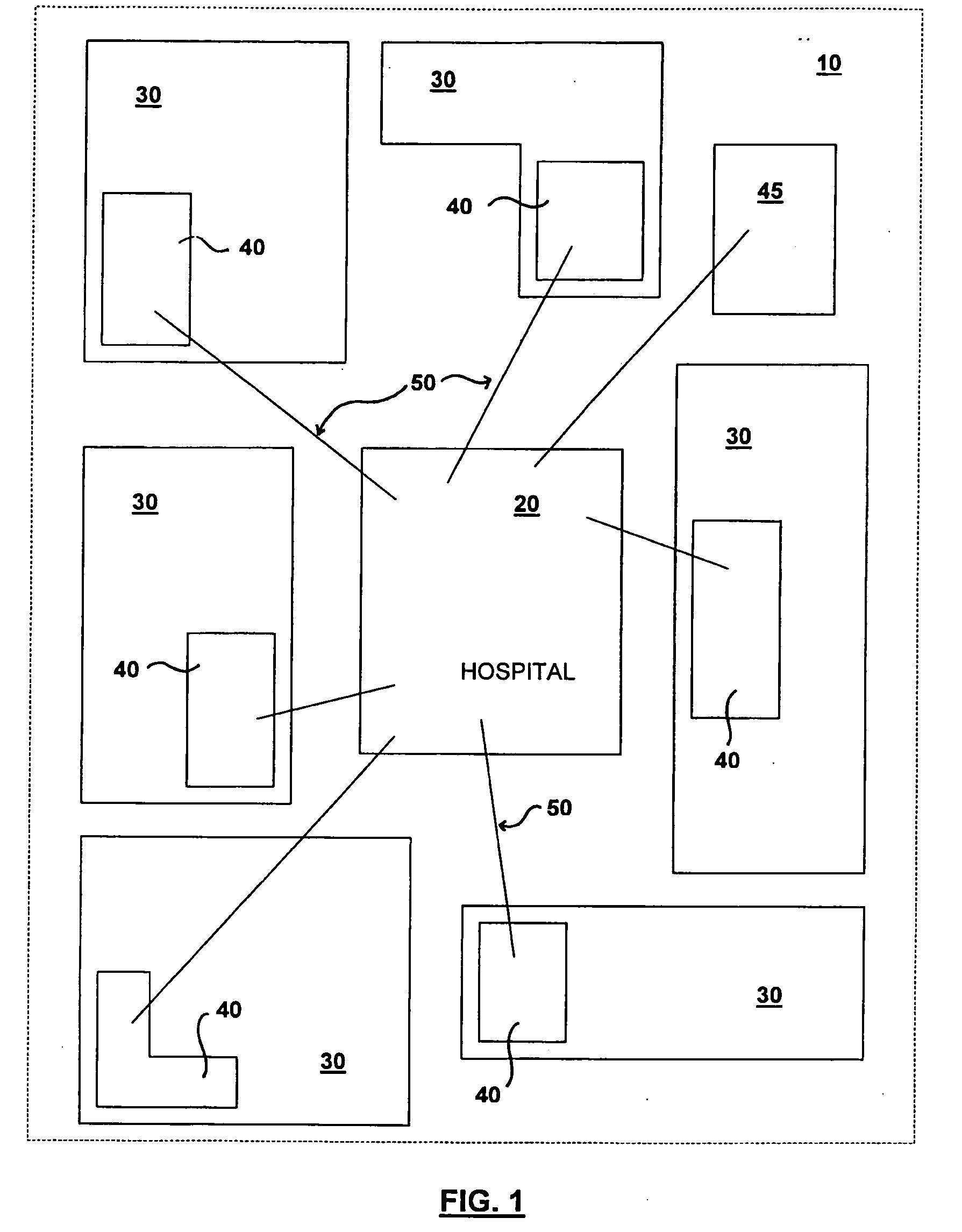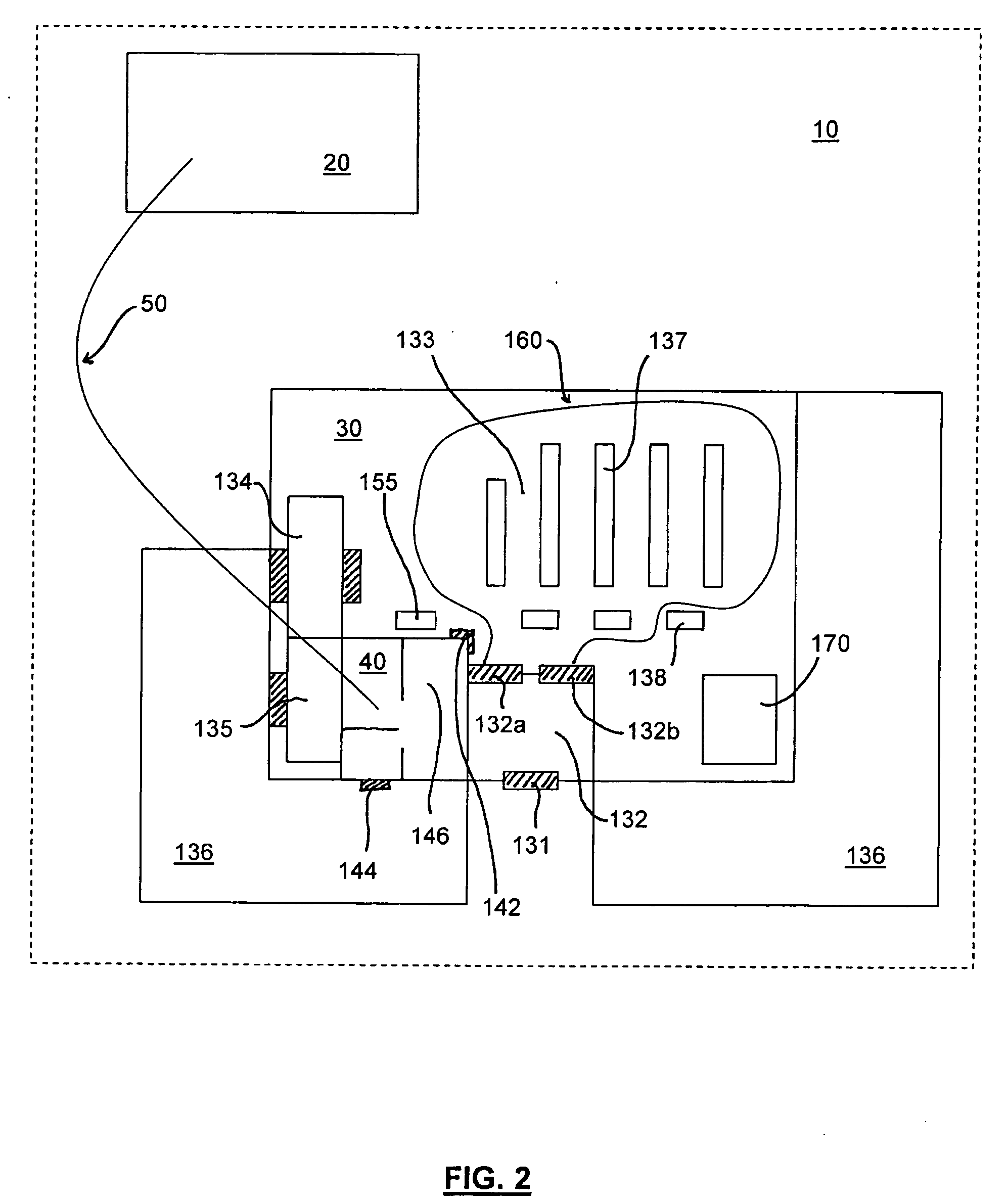Hospital medical care and referral system with clinics at off-site locations
a referral system and medical care technology, applied in special buildings, schools, parking lots, etc., can solve the problems of not having a licensed physician with private practice to act as a patient referral source for hospitals, not efficient ways for hospitals or patients to attend to routine medical problems, and not having a patient referral infrastructure. , to achieve the effect of increasing the patient base and referring patients, and convenient patient car
- Summary
- Abstract
- Description
- Claims
- Application Information
AI Technical Summary
Benefits of technology
Problems solved by technology
Method used
Image
Examples
first embodiment
[0039] In a first embodiment, shown in FIG. 3A, clinic 40 has a basic square layout. The clinic 40 includes an entrance 205 and reception area 210. A receptionist may be seated at reception desk 215 and may take identification information from a patient so that the patient's medical file, if already created, can be retrieved, or so that a new file can be created for the new patient. The entire clinic 40 in general, and the reception area 210 in particular, have privacy features 218 including, but not limited to, sound proof tiles in the walls and frosted glass. These privacy features 218 add to the comfort of a patient waiting to be seen by a physician in the clinic.
[0040] When a patient is to be seen by the physician or by his assistant, who can be a nurse or other trained medical assistant, the patient enters either a first examination room 220 or a second examination room 230. Each of the examination rooms are approximately the same size and include medical equipment necessary fo...
second embodiment
[0043] In FIG. 3B, there is also included a stairway 350 that leads to a second floor area (not shown) that may be used for storage of supplies, or as additional patient examination space, or for observation beds or the like. By providing a second floor area, the use of the space within the facility in which the clinic 40 is located is maximized.
[0044] A third embodiment of a clinic 40 according to the present invention is shown in FIG. 3C. The dimensions of the clinic 40 are greater than those of the first and second embodiments shown in FIGS. 3A and 3B. The clinic 40 includes an entrance 405 and reception area 410 including a desk 415 at which a receptionist may be seated. The receptionist may take identification information from a patient so that the patient's medical file, if already created, can be retrieved, or so that a new file can be created if the patient is new. As in the other embodiments described above, the entire clinic 40 and the reception area 410 in particular have...
third embodiment
[0045] When a patient is to be seen by the physician or by his assistant, who can be a nurse or other trained medical assistant, the patient enters either a first examination room 420 or a second examination room 430. Each of the examination rooms are approximately the same size and include medical equipment necessary for basic medical evaluations and physical examinations, such as height, weight, and blood pressure. One or both of the examination rooms 420, 430 may also be suitably equipped with materials necessary to provide vaccinations and to collect laboratory samples from the patient. A bathroom 440 is also provided. In addition, in the clinic shown in FIG. 3C, there is also included a third examination room 450 that is slightly larger than the first and second examination rooms 420, 430 to accommodate equipment for use in taking patient X-rays.
[0046] The clinic 40 in the system 10 of the present invention is not limited to the three embodiments shown herein. Additional rooms ...
PUM
 Login to View More
Login to View More Abstract
Description
Claims
Application Information
 Login to View More
Login to View More - R&D
- Intellectual Property
- Life Sciences
- Materials
- Tech Scout
- Unparalleled Data Quality
- Higher Quality Content
- 60% Fewer Hallucinations
Browse by: Latest US Patents, China's latest patents, Technical Efficacy Thesaurus, Application Domain, Technology Topic, Popular Technical Reports.
© 2025 PatSnap. All rights reserved.Legal|Privacy policy|Modern Slavery Act Transparency Statement|Sitemap|About US| Contact US: help@patsnap.com



